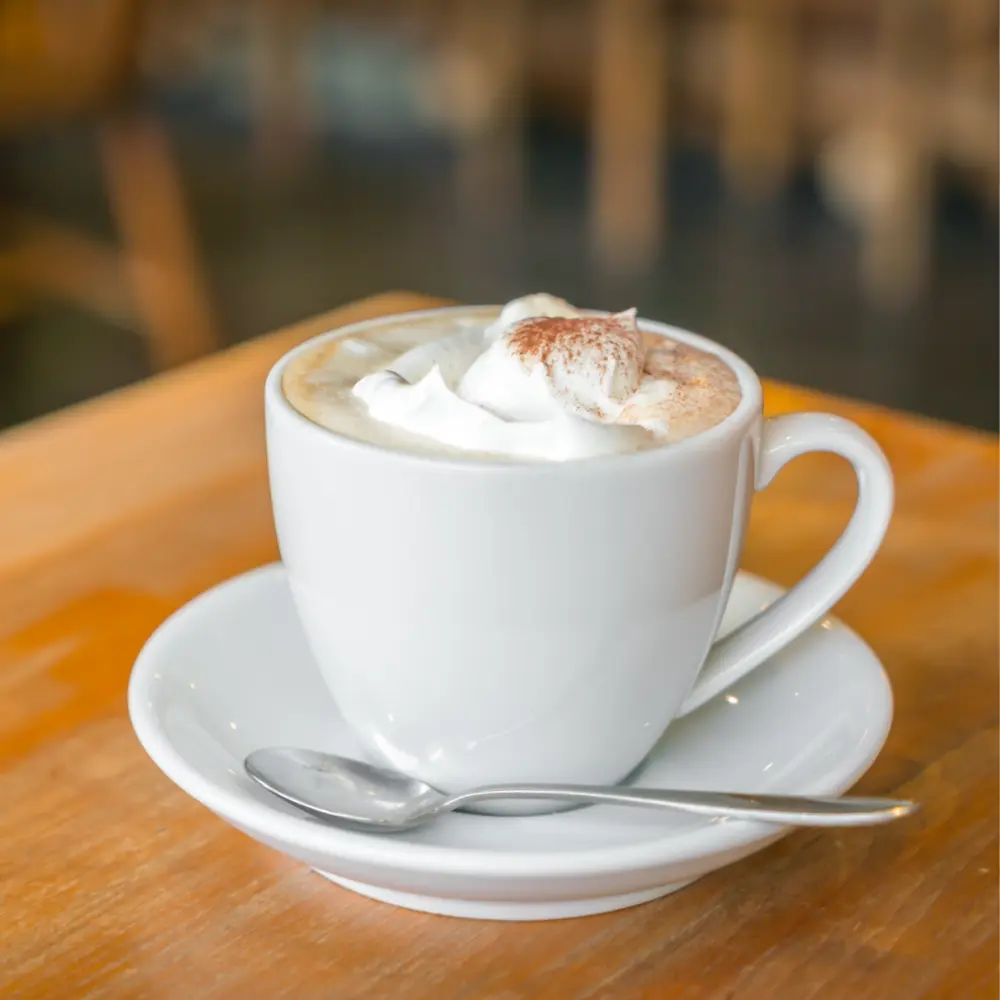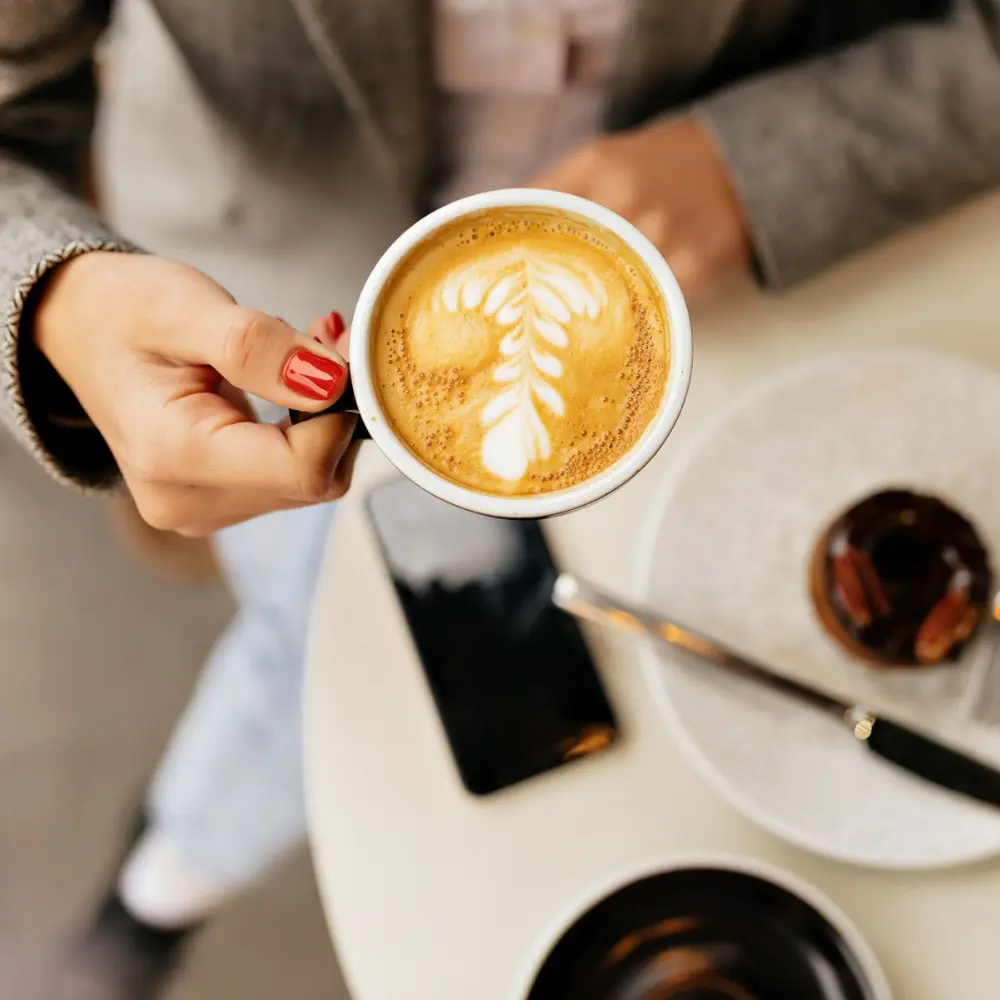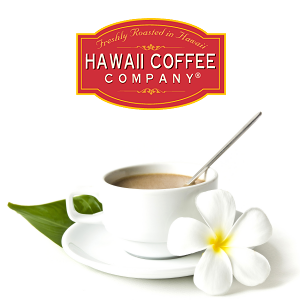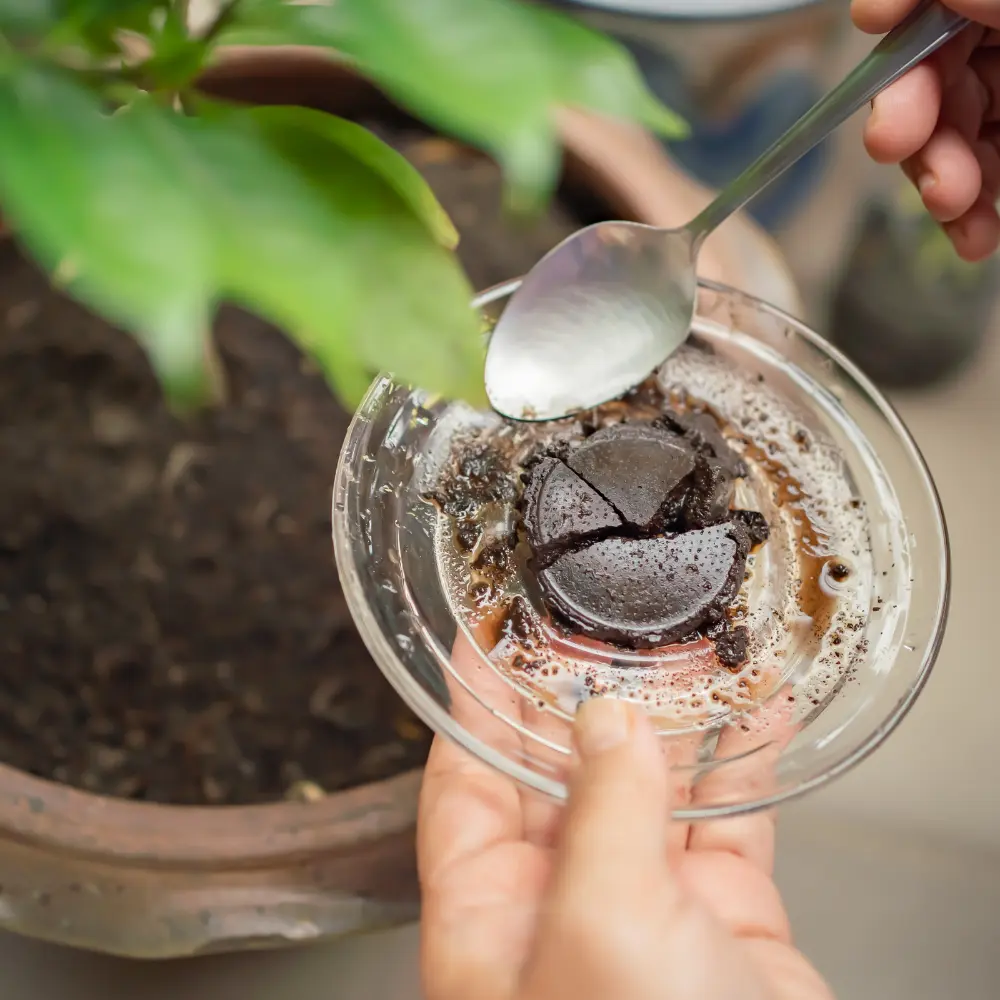Coffee is more than just a beverage—it’s a culture, a ritual, a conversation, and sometimes, it’s an entire language. The language of coffee, laden with unique slang and rich in history, captures the essence of this worldwide phenomenon. This guide, “Understanding Coffee Slang: Your Essential Guide to Coffee Terminology,” uncovers the layers of this language, revealing the story hidden in every cup.
Have you ever pondered the colloquial terms for coffee, like a “cup of joe” or a “shot in the dark”? They might seem familiar, but beneath the surface, these phrases hold intriguing stories. Even the phrase “What does coffee mean sexually?” has a place in this wide landscape of coffee lingo, adding a layer of risqué intrigue. We’ll explore these phrases and more, shedding light on the playful, sometimes coded, language used by baristas, coffee enthusiasts, and casual drinkers alike.
We’ll journey through the global coffee culture, exploring how words have been shaped by historical events, cultural shifts, and the simple love of a good brew. Whether these terms have seeped into common parlance or remain cherished parlance in coffee connoisseur circles, they all contribute to the rich tapestry of coffee slang.
Get ready to view your daily brew from a new perspective, as we unravel the stories and meanings behind the words. After all, a cup of coffee is never just a cup of coffee—it’s a journey, a history, a statement, and an invitation to connect. So let’s decode this intricate language together, transforming your next coffee conversation into a captivating dialogue.
Coffee Slang: Key Takeaway
- Coffee Slang Origins: The language of coffee is deeply rooted in historical and cultural influences, most notably from Italian coffee culture. Many popular coffee terms we use today are derived from Italian words, reflecting the country’s longstanding tradition and love for coffee.
- Understanding Coffee Types Through Slang: Terms like “Cup of Joe,” “java,” and various espresso slangs shed light on different coffee types and preparations. In addition, the way we use coffee in language can sometimes hint at underlying social or romantic implications.
- Barista Lingo: The art of coffee preparation comes with its unique jargon. Words like “pulling a shot,” “dialing in,” and terminologies associated with coffee roasting and grinding unveil the meticulous craft behind the coffee preparation process.
- Ordering Coffee Using Slang: Coffee shop lingo can be confusing, but once you understand the slang used for different coffee sizes, styles, and additives, you’ll be able to order your favorite brew like a pro and fully personalize your coffee experience.
- Everyday Coffee Slang: Coffee slang isn’t confined to coffee shops. These terms often spill over into everyday conversation, enriching our language and allowing us to express our coffee preferences or energy levels in a fun and relatable way.
Origins of Coffee Slang
Language, like a good brew, takes time to develop. The vocabulary we use when talking about coffee, from the ordering process to the nuances of different blends, is no different. When we explore the origins of slang for coffee, we find ourselves journeying through time and across continents.
Influence of Italian on Coffee Slang
The impact of Italian culture on coffee terminology is undeniable. This can be seen in the plethora of Italian terms that have become integral parts of coffee lingo globally. Let’s explore a few of these:
- Espresso: The word “espresso” is derived from Italian, translating to ‘express’ or ‘fast.’ This term captures the very spirit of an espresso – a potent, concentrated coffee experience served quickly. (1)
- Cappuccino: ‘Cappuccino’ is derived from the Latin word Caputium, which was afterwards borrowed in German/Austrian and transformed into Kapuziner. Cappuccino is the diminutive form of cappuccio in Italian, which means “hood” or “something that covers the head”. This delightful connection adds a touch of historical context to our morning brew. (2)
- Macchiato: In Italian, “macchiato” means ‘stained’ or ‘spotted.’ In the world of coffee, a macchiato refers to an espresso stained or marked with a spot of milk, further emphasizing the influence of Italian culture in coffee terminology. (3)
The beauty of Italian influence extends beyond just the love for coffee. It also reflects an appreciation for the aesthetic, the poetic, and the everyday beauty that coffee represents in our lives.
The Impact of Coffee Cultures on Coffee Slang
The global coffee-drinking culture has also played a pivotal role in shaping the slang for coffee. Different regions have developed their own unique terms, often shaped by local customs, preferences, and even historical events.

In America, for instance, the term “Joe” for coffee is believed to have originated during World War II. The story goes that Josephus Daniels, Secretary of the Navy, banned alcohol on naval vessels, leading the crew to consume more coffee and affectionately nickname it “Joe”. (4)
Meanwhile, Australians are known for coining the term “flat white” for a particular style of coffee—showing their passion for a well-crafted brew. (5)
Historical Roots of Popular Coffee Terms
Historically, coffee has been a crucial part of society and this is reflected in the language we use to talk about it. From the casual to the formal, the origin of much of our coffee slang is deeply rooted in the past.

A prime example is the term “java.” This nickname for coffee originated from the island of Java, in Indonesia, which was one of the world’s leading coffee producers in the 17th century. The term has persisted and is now used globally, reminding us of the humble origins and long journey of our favorite beverage.
Whether you’re ordering a “cup of Joe” or discussing the “shot” you take in the morning, every term carries with it a piece of history. The slang for coffee, like the drink itself, is a blend of flavors from different regions and eras, creating a rich and fascinating tapestry of language.
Understanding Coffee Types through Slang
The language used in coffee circles often reflects the type of coffee being discussed. As we dive deeper into the nuances of coffee jargon, we can discover not just the diversity of coffee types but also the rich history and cultural influences that have shaped the slang for coffee.
Decoding Espresso Slang

The world of espresso comes with its own lingo, which can often seem like a foreign language to the uninitiated. Here’s a crash course on a few key terms:
- A “shot” of espresso refers to the amount of coffee produced when water is pushed through the espresso grounds under pressure. It’s usually about 1 ounce of beverage.
- “Pulling a shot” is a term derived from the early days of espresso machines that required the barista to pull a lever to create the pressure necessary for brewing.
- “Crema” is the layer of foamy, creamy emulsion that forms on top of a properly brewed shot of espresso. Its presence is often seen as a sign of a well-brewed espresso shot.
Diving into Specialty Coffee Lingo

Specialty coffee culture has its own unique set of slang. Here are a few terms that will help you navigate this niche:
- “Third wave” refers to the current movement within specialty coffee that focuses on high-quality, artisanal production from farm to cup. It’s all about appreciating coffee as an artisanal product, akin to wine. (6)
- A “pour-over” is a brewing method where hot water is poured over coffee grounds in a filter, allowing the coffee to drip into the serving vessel.
- A “flat white” is a coffee drink that originated in Australia. It consists of a shot of espresso and steamed milk, but with less foam than a cappuccino, creating a ‘flat’ appearance.
These terms illustrate the breadth and depth of the slang for coffee, offering a glimpse into the diverse world of coffee and the myriad ways in which it’s enjoyed worldwide.
Coffee Preparation and Barista Slang
The art of coffee preparation is a symphony of steps, each with its own set of specialized terms. The world behind the counter, from the barista’s station to the roasting room, is filled with a unique set of terminologies that reflect the precision and craft involved in creating the perfect brew. As we explore the slang for coffee in this realm, we discover the depth of expertise and dedication involved in coffee preparation.
Navigating Barista Terminology: Pulling Shots, Dialing In, and More

If you’ve ever lingered near a coffee shop counter, you’ve likely heard the baristas using terms that may sound foreign. This language is a crucial part of their craft, capturing the fine art of espresso making:
- “Pulling a shot“, as mentioned before, is a term that dates back to the days when espresso machines required the operator to physically pull a lever to brew the coffee. Even with modern machines, the term has stuck around, painting a picture of the effort and expertise involved in making the perfect espresso.
- “Dialing in” refers to the process of adjusting the grinder to get the perfect grind size for espresso. It’s a precise task that can affect the flavor and quality of the coffee.
- Dosing” refers to measuring the amount of coffee grounds used to brew an espresso. Too much or too little can throw off the balance of the shot.
Behind the Scenes: The Slang of Coffee Roasting

Coffee roasting is another realm with its own lingo that may seem mysterious to those outside the industry. A few key terms include:
- “First Crack” refers to the point in the roasting process when the beans start to pop or crack. It signals that the beans have reached a light roast level.
- “City Roast” and “French Roast” are terms that indicate the level of roasting. City Roast is a medium roast, while French Roast refers to a darker roast.
- “Quakers” are underdeveloped or defective beans that don’t roast properly and appear lighter than the rest. They’re usually removed before the beans are sold.
The Art of Coffee Grinding and Brewing Slang

Grinding and brewing coffee is an art in itself, with a host of terms that reflect the intricacies involved:
- “Burr” and “Blade” refer to the two primary types of coffee grinders. Burr grinders are preferred by professionals for their precision, while blade grinders are more common for home use.
- “Bloom” is a term used in pour-over brewing. It refers to the process of pouring a small amount of hot water over the grounds to let them ‘bloom’ or release gases before continuing with the brewing process.
- “Immersion” and “Percolation” are two key methods of brewing. Immersion brewing involves immersing the coffee grounds in water, as in a French press, while percolation involves water passing through the grounds, as in a pour-over or espresso machine.
Whether you’re a budding coffee enthusiast or a seasoned connoisseur, understanding the slang for coffee can deepen your appreciation for the craft and skill that goes into your favorite brew.
How to Order Coffee Using Slang
Armed with a bit of insider lingo, you can enhance your coffee-ordering experience and sound like a seasoned connoisseur. Understanding the slang associated with ordering coffee can help you navigate the coffee shop menu like a pro and communicate your preferences accurately.
How to Sound Like a Pro at the Coffee Shop

Stepping up to a coffee shop counter can sometimes feel like walking into a different country. The menu is full of words you vaguely recognize, but when the barista starts speaking, it seems like a foreign language. Here’s how to decode the lingo:
- “Single” or “Double“: Refers to the number of espresso shots in your drink. If you need an extra kick, you might ask for a “double.”
- “Why Bother“: A decaf coffee. It’s a tongue-in-cheek way of implying that without caffeine, coffee loses a bit of its allure.
- “Skinny“: This term signifies that you’d like your drink made with non-fat or low-fat milk.
The Lingo of Coffee Sizes and Styles

When it comes to ordering, knowing the language of coffee sizes and styles can help you get the perfect cup:
- “Short” and “Tall”: Despite what it sounds like, ‘tall’ is actually the smallest size at many coffee shops, while ‘short’ refers to an even smaller option that’s not usually on the menu but can be ordered.
- “Grande“: This term means ‘large’ in Italian, but at most coffee shops, it’s actually a medium.
- “Venti“: Italian for ‘twenty,’ referring to the 20-ounce size of the drink.
- “Americano“: This term refers to a style of coffee made by adding hot water to espresso, essentially a diluted espresso.
Slang Terms for Coffee Additives: From “Dirty” to “Breve”

Even the additives in your coffee come with their own slang:
- “Dirty“: A “dirty” chai latte, for instance, means adding shots of espresso to your chai latte.
- “Breve“: An espresso made with half milk and half cream instead of whole milk.
- “Dry“ vs “Wet“: ‘Dry’ means less steamed milk and more foam cappuccino, while ‘wet’ means one with more steamed milk and less foam.
Whether you’re a seasoned coffee veteran or a newbie to the café scene, knowing how to order using coffee slang can enhance your overall coffee experience. It adds a touch of authenticity and fun to your coffee shop visit and allows you to tailor your order to your precise preferences.
Incorporating Coffee Slang into Everyday Conversation
As coffee culture permeates different aspects of life, so does its unique lingo. Coffee slang isn’t just for coffee shops – these terms can spill over into everyday conversation, enriching language and enhancing communication. Let’s explore how to seamlessly incorporate coffee slang into our daily chat, use it correctly, and understand its variations across the globe.
Talking Coffee: Common Slang Phrases

Certain coffee phrases have entered the everyday language and are commonly used even outside the context of a coffee shop:
- “Running on Empty“: This phrase means you’re out of energy and in need of a coffee boost.
- “Brew-tiful“: A blend of the words ‘brew’ and ‘beautiful,’ often used to describe a perfectly made cup of coffee.
How to Use Coffee Slang Correctly
As with any specialized lingo, context is key when using coffee slang. These terms are best used in appropriate scenarios related to coffee, be it at a café, discussing coffee preferences, or referring to your need for caffeine. Remember, the goal of using coffee slang should be to enrich your conversation and express your love for coffee, not to confuse or exclude others.
Coffee Slang Across the Globe: A Comparative Look

Coffee culture, and hence coffee slang, varies globally. Here’s a snapshot of how coffee lingo differs around the world:
- As mentioned before, in Australia, a “flat white” refers to an espresso with a small amount of milk and a thin layer of microfoam.
- In Italy, “caffè” will get you a shot of espresso, as that’s the standard way of drinking coffee there.
- In the UK, asking for a “builder’s tea” will get you a strong, usually sweet, milky tea – demonstrating that coffee shops aren’t just about coffee!
Understanding the coffee slang of different cultures can be an exciting way to explore global coffee habits and deepen your appreciation for this universal yet diverse beverage. The wide-ranging lingo of coffee enriches language, fosters cultural exchange, and most importantly, celebrates the beloved ritual of enjoying a good cup of coffee.
What Does Coffee Mean Sexually?
In certain contexts, “coffee” has been used as a euphemism or coded language, especially in popular culture, literature, and cinema. While it primarily refers to the beverage we all know and love, in some instances, “coffee” has been used metaphorically to imply a sexual encounter or romantic interest. (7)

The use of “coffee” in this way can be traced back to classic films and TV shows, where characters often used the phrase “Would you like to come up for some coffee?” as a somewhat discreet way to invite someone into their home, suggesting potential romantic or sexual interest. It provided a way to navigate around the censorship and societal norms of the times, allowing characters to express their intentions subtly.
This use of “coffee” has less to do with the drink itself and more to do with the social ritual associated with coffee drinking—two people spending time together, often in intimate or private settings. However, it’s essential to note that these connotations aren’t universally accepted or understood and largely depend on cultural, contextual, and individual interpretations.
In today’s more direct society, this metaphorical usage is less common, and “coffee” typically refers to a beverage or a casual social interaction, like a coffee date. Nonetheless, the diverse uses of “coffee” throughout history underline the cultural significance of this ubiquitous drink and its impact on our language and social rituals.
Conclusion
In conclusion, the rich and varied slang for coffee is more than just jargon. It’s a testament to the deep cultural significance of coffee and the passion and expertise involved in crafting this beloved beverage. Whether you’re a barista, a coffee aficionado, or simply someone who can’t start their day without their morning brew, understanding coffee slang can enrich your coffee experience and deepen your appreciation for this centuries-old ritual.
From the historical origins of coffee terminology to the intricate lingo of coffee preparation and ordering, we’ve dived into the fascinating world of coffee slang. We’ve also explored how to incorporate these terms into everyday conversation and compared coffee slang across different cultures, offering a global perspective on our shared love for coffee.
As for the intriguing question, ‘What does coffee mean sexually?’ We’ve learned that, in certain contexts, ‘coffee’ can serve as a metaphor for romantic or sexual encounters. It’s a reminder of the diverse ways in which coffee permeates our language and culture, beyond just being a beloved beverage.
At the end of the day, understanding coffee slang is about more than just knowing what to order at a coffee shop. It’s about celebrating the rich tapestry of coffee culture and the profound role that this humble beverage plays in our lives. So the next time you’re sipping your cup of joe, take a moment to appreciate the art, science, and language that went into making it. It’ll make your coffee taste that much brew-tiful!
FAQ
What does "pulling a shot" mean in barista terminology?
"Pulling a shot" refers to the process of making an espresso, which involves 'pulling' hot water through a compact 'puck' of finely ground coffee.
What is the difference between "flat white" and "cappuccino" in coffee slang?
In coffee slang, a "flat white" is an espresso with a small amount of milk and a thin layer of microfoam, whereas a "cappuccino" is an espresso with equal parts of steamed milk and froth.
How has Italian influenced modern coffee slang?
Italian has greatly influenced modern coffee slang with terms like 'espresso', 'cappuccino', and 'macchiato' all derived from the Italian language, reflecting Italy's deep coffee culture.
Why do coffee professionals use slang?
Coffee professionals use slang to communicate more effectively about specific brewing techniques, coffee characteristics, and customer preferences in a concise way.
What does coffee mean sexually?
In certain contexts, coffee can be used as a metaphor for romantic or sexual encounters, adding a layer of intrigue to coffee-related conversations.















